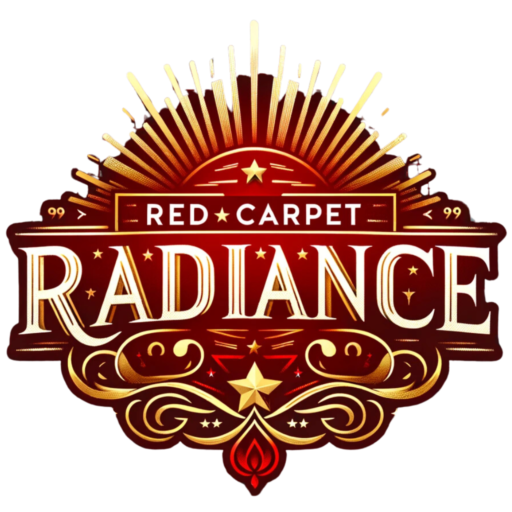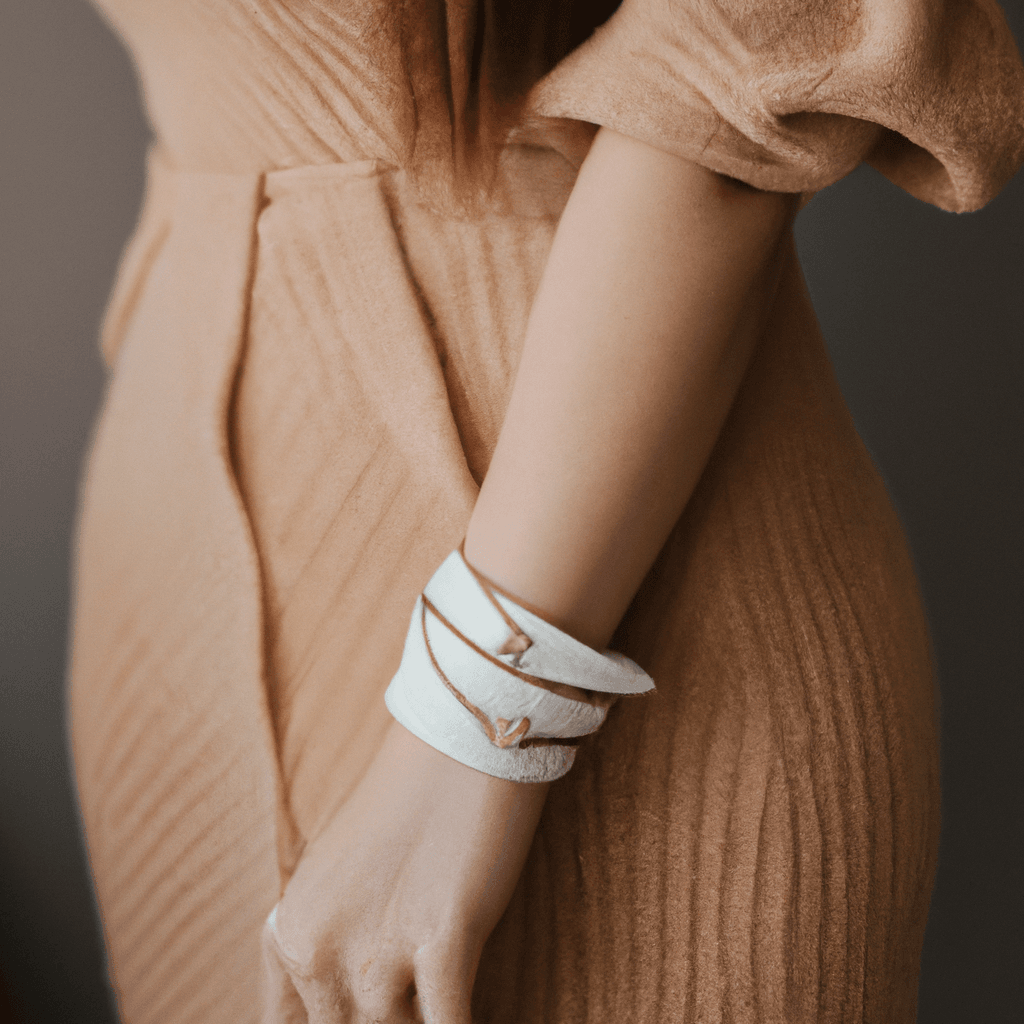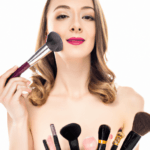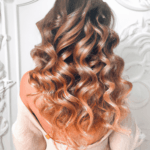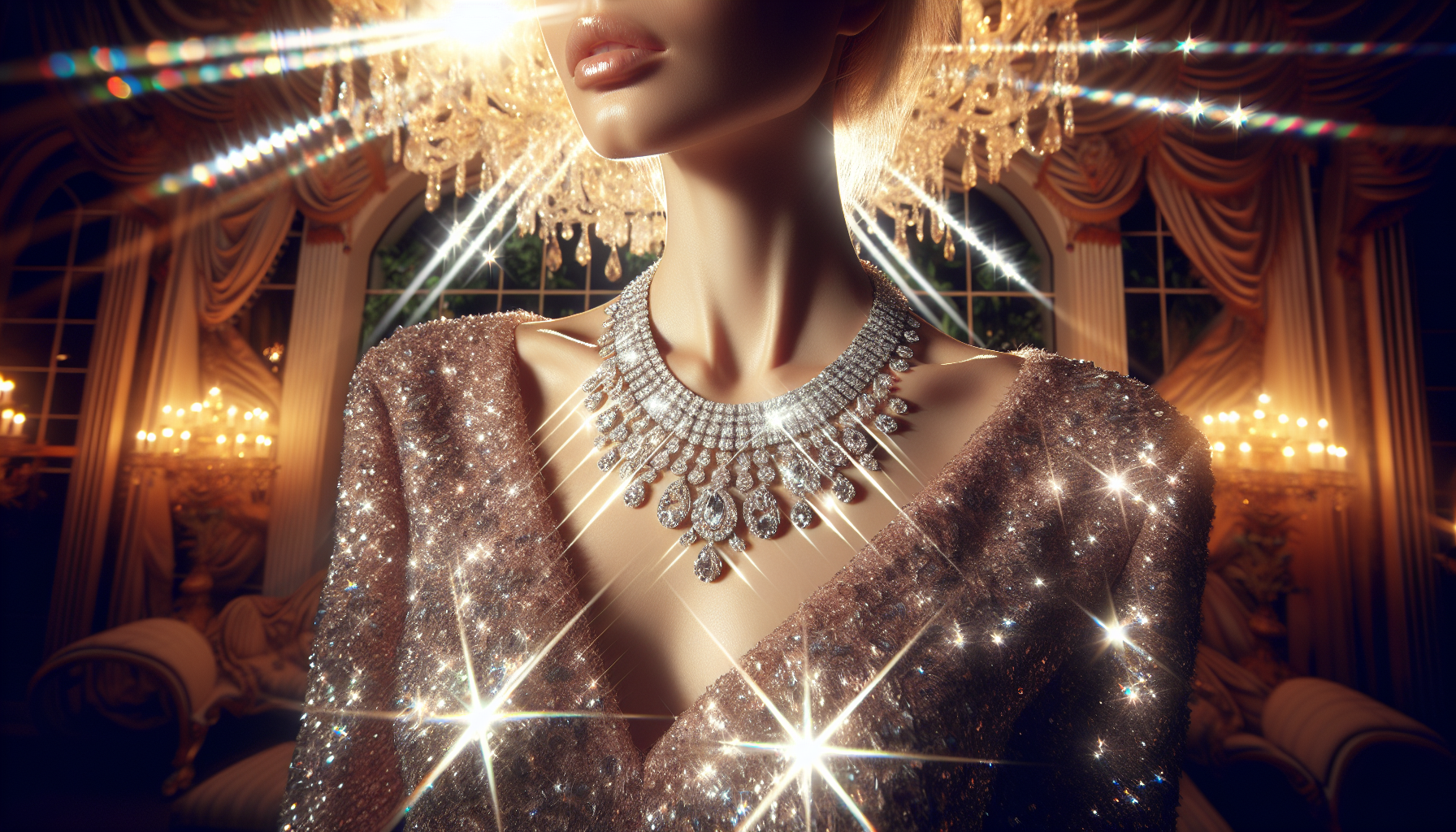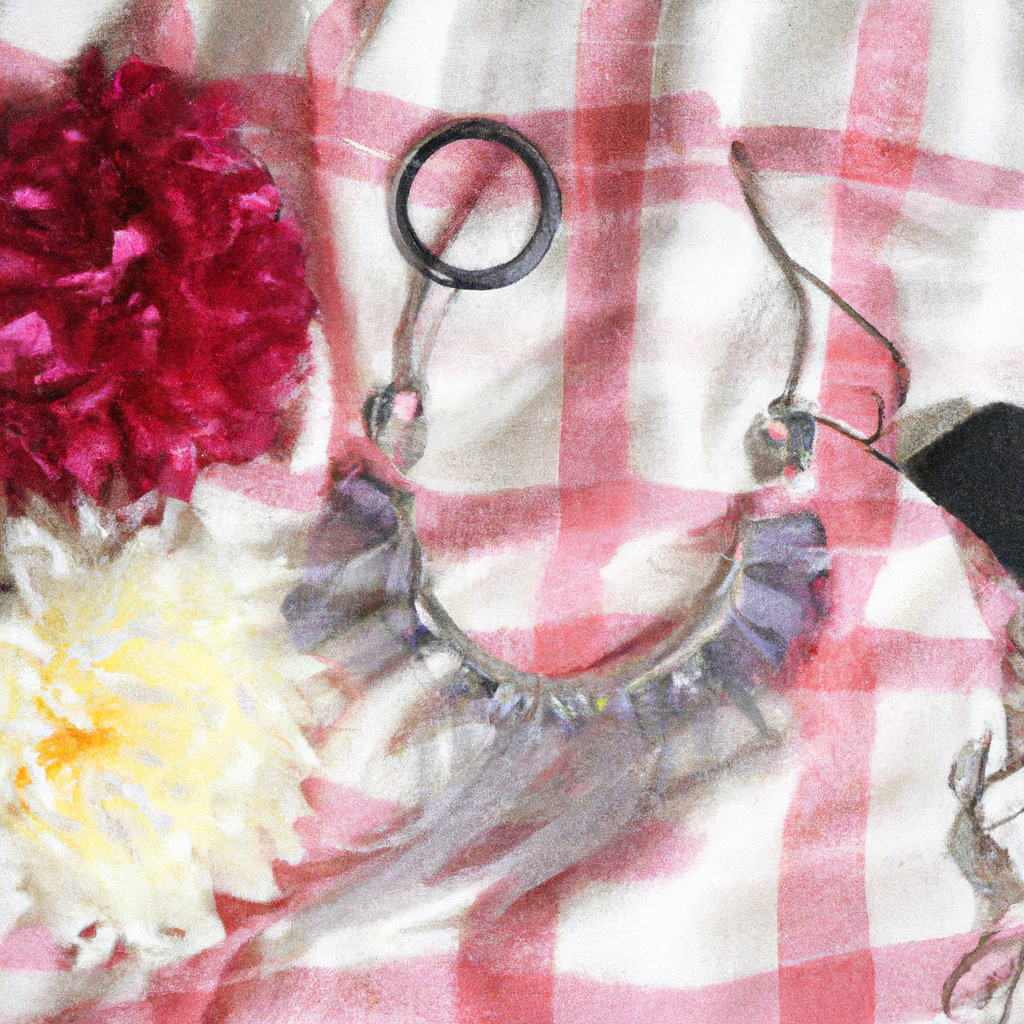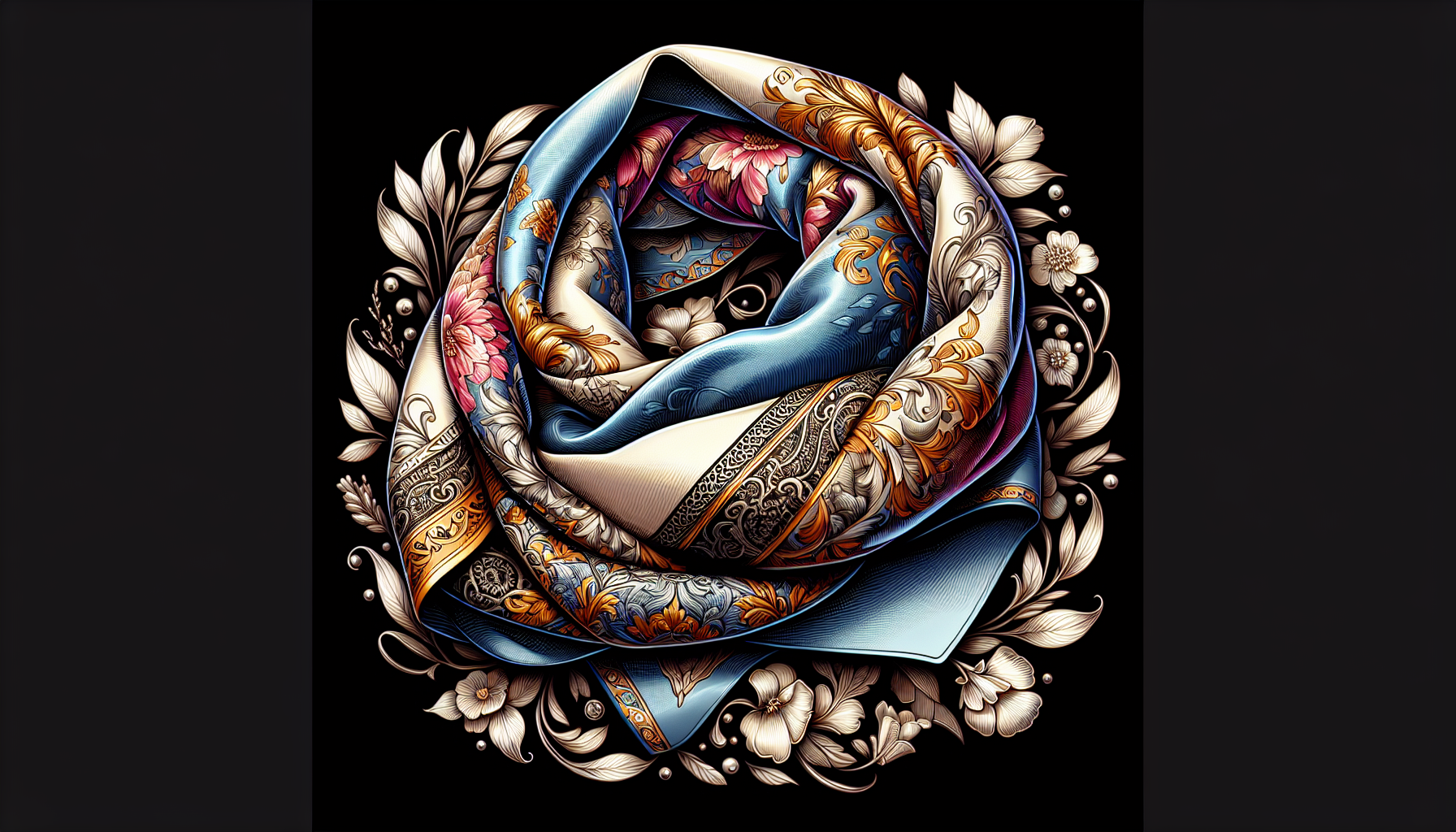You’ve meticulously chosen the perfect outfit, but now it’s time to take it to the next level with accessories that will truly elevate your style. Whether you’re headed to a formal event or simply want to add some flair to your everyday ensemble, accessorizing is the key to achieving a polished and put-together look. From statement jewelry to stylish belts, this article will explore the top ways to accessorize your outfit and effortlessly showcase your personal style. So, get ready to discover the secrets that will transform your wardrobe from ordinary to extraordinary!
Selecting The Perfect Jewelry
Choosing appropriate jewelry for the occasion
When it comes to selecting the perfect jewelry, one of the most important factors to consider is the occasion or event you will be attending. Different occasions call for different types of jewelry, so it’s essential to choose pieces that are appropriate for the setting. For formal events such as weddings or black-tie affairs, opt for elegant and sophisticated pieces like diamond studs or a statement necklace. On the other hand, for more casual occasions like a brunch with friends or a day at the office, you can go for more relaxed and versatile jewelry such as dainty bracelets or stackable rings. By choosing jewelry that suits the occasion, you can add the perfect finishing touch to your outfit and exude confidence and style.
Balancing jewelry with the outfit
When it comes to accessorizing with jewelry, it’s crucial to strike a balance between your pieces and the overall outfit. If you’re wearing a bold and statement-worthy dress, it’s best to opt for simpler and more understated jewelry that won’t overpower the outfit. On the other hand, if you’re wearing a more minimalistic and sleek outfit, you can have fun with your jewelry by incorporating bolder and more eye-catching pieces. The key is to ensure that your jewelry enhances your outfit rather than competing with it. By finding the right balance, you can create a cohesive and harmonious look that showcases both your outfit and your jewelry.
Layering necklaces, bracelets, and rings
One of the trends that has become increasingly popular in recent years is the art of layering necklaces, bracelets, and rings. Layering jewelry allows you to create a personalized and unique look by combining different pieces to achieve a trendy and fashionable style. When it comes to layering necklaces, start with a focal point piece like a pendant necklace and add shorter or longer necklaces of varying lengths to create depth. Similarly, when layering bracelets, mix and match different types such as bangles, cuffs, and delicate chains to achieve a stylish and eclectic effect. As for rings, you can stack multiple rings on one finger or even spread them across multiple fingers for a bohemian and edgy look. With the right combination and placement, layering your jewelry can elevate your outfit to the next level of chicness.
Adding a Statement Watch
Choosing the right watch to match the outfit
A statement watch can be a game-changer when it comes to accessorizing your outfit. It not only serves as a functional timepiece but can also add a touch of sophistication and elegance to your overall look. When choosing a watch to match your outfit, consider the style, color, and materials. For formal occasions, a classic and timeless watch with a metal or leather strap in neutral tones like silver, gold, or black is a safe and stylish choice. On the other hand, if you’re going for a more casual or playful look, consider a watch with a colorful or patterned strap to inject some fun and personality into your outfit. Remember, your watch should complement your outfit rather than overpower it, so choose wisely.
Understanding formal watches versus casual watches
Different watches are designed for different dress codes and occasions. Formal watches typically have a more refined and elegant design, often featuring a clean and minimalist dial and a classic leather or metal strap. These watches are best suited for formal events or professional settings where a polished and sophisticated appearance is required. On the other hand, casual watches tend to have a more relaxed and laid-back design, with features like colorful straps, larger dials, or sporty elements. These watches are perfect for everyday wear or more casual occasions where you want to add a touch of style to your outfit without being too formal. Understanding the distinction between formal and casual watches will ensure that you choose the right timepiece for any given situation.
Pairing watches with other jewelry pieces
When it comes to accessorizing with a statement watch, it’s important to consider how it will be complementing other jewelry pieces you may be wearing. If you’re wearing a bold and eye-catching watch, it’s best to keep other jewelry minimal and understated to avoid overpowering your wrist. Opt for simple and delicate bracelets or bangles that won’t compete for attention with your watch. On the other hand, if your watch is more subtle and dainty, you can experiment with layering bracelets or adding a statement ring to create a more elaborate look. The key is to ensure that your watch is the center of attention, and other jewelry pieces play a supporting role to enhance its impact.
Choosing The Right Handbag
Size and shape of the handbag
When it comes to choosing the right handbag, size and shape are two crucial factors to consider. The size of your handbag should be proportional to your body frame and the occasion. For example, a small clutch or crossbody bag works well for an evening event or a night out, as it allows you to carry just the essentials without weighing you down. On the other hand, a larger tote or shoulder bag is more practical for everyday use, as it can accommodate your daily essentials like a wallet, phone, keys, and even a small umbrella. As for shape, consider your body type and personal style. If you have a curvy silhouette, a structured and rectangular bag can add balance and definition. If you have a more petite figure, a smaller and structured bag can create the illusion of height. Ultimately, choose a handbag that both complements your outfit and fulfills your functional needs.
Color coordination with the outfit
Color coordination between your handbag and your outfit is another important aspect of achieving a polished and put-together look. One option is to choose a handbag that matches or complements one of the colors in your outfit. For example, if you’re wearing a navy blue dress, a handbag in a similar shade of blue or a contrasting color like white or tan can create a cohesive and harmonious look. Another option is to go for a neutral-colored handbag that can easily be paired with any outfit. Black, brown, and gray are classic options that work well with a wide range of colors and patterns. By considering the color palette of your outfit and selecting a handbag that coordinates accordingly, you can achieve a cohesive and stylish ensemble.
Balancing handbag with other accessories
When it comes to accessorizing with a handbag, it’s crucial to strike a balance between your bag and your other accessories. If you’re wearing statement or oversized accessories like chunky necklaces or bold earrings, it’s best to opt for a more understated and minimalist handbag that won’t compete for attention. On the other hand, if your outfit is relatively simple and lacks any standout accessories, you can use your handbag as a statement piece to elevate your look. Choose a handbag with interesting details, unique textures, or eye-catching patterns to add a touch of personality and style to your outfit. Ultimately, the key is to ensure that all your accessories work harmoniously together to enhance your overall look.
Enhancing Your Look with Belts
Choosing the style and material of the belt
Belts are not only functional but can also add a stylish and fashionable touch to your outfit. When choosing a belt, consider both the style and material that best suits your outfit and personal style. For a classic and timeless look, opt for a leather belt in a neutral color like black, brown, or tan. A leather belt can effortlessly elevate the sophistication of any outfit, whether it’s a pair of jeans or a tailored dress. If you’re looking to make a bolder statement, consider a belt with unique details like metallic hardware, studs, or a textured finish. These belts can add a touch of edge and personality to your ensemble. Ultimately, choose a belt that not only complements your outfit but also reflects your personal style and enhances your overall look.
Wearing a belt with dresses and skirts
Belts can be particularly flattering when worn with dresses and skirts as they can define your waist and create a more shapely silhouette. When wearing a belt with a dress or skirt, consider the style and length of the garment. If you’re wearing a loose and flowy maxi dress, a wide belt can help cinch in your waist and create a more defined silhouette. On the other hand, if you’re wearing a fitted pencil skirt, a skinny belt can add a touch of polish and accentuate your curves. Another way to wear a belt with a dress is by placing it higher up on your waist to create an empire waistline and add a feminine touch to your outfit. Experiment with different belt widths and placements to find the most flattering and stylish way to wear a belt with your dresses and skirts.
Coordinating belt and shoes
When it comes to coordinating your belt and shoes, there are a few guidelines to keep in mind. One option is to match the color and material of your belt to your shoes for a cohesive and polished look. For example, if you’re wearing a black leather belt, pair it with black leather shoes. This creates a sense of continuity and visual harmony. Another option is to choose a belt and shoes in complementary colors or tones. For example, if you’re wearing a brown leather belt, consider pairing it with shoes in a similar earthy tone like tan or cognac. This creates a coordinated and cohesive look without being too matchy-matchy. Ultimately, the goal is to ensure that your belt and shoes work together to enhance your outfit and create a well-put-together look.
Perfecting The Look with Scarves
Choosing the right scarf for the outfit
Scarves are not only functional for keeping cozy in colder weather, but they can also be used as a stylish accessory to elevate your outfit. When choosing a scarf, consider the style, color, and fabric that best suits your outfit and personal taste. For a classic and timeless look, opt for a neutral-colored scarf in a fine and luxurious fabric like cashmere or silk. These scarves can effortlessly add sophistication and elegance to any ensemble. If you’re looking to make a bolder statement, consider scarves with vibrant colors, bold prints, or interesting textures. These scarves can act as the focal point of your outfit and add a touch of personality and flair. Ultimately, choose a scarf that complements your outfit and reflects your personal style to achieve the perfect finishing touch.
Different ways to tie a scarf
There are countless ways to tie a scarf, and the method you choose can completely transform your look. Some classic and versatile options include the drape, the loop, and the knot. The drape involves simply draping the scarf around your neck with both ends hanging loose. This is a chic and effortless look that works well with a variety of outfits. The loop involves folding the scarf in half, draping it around your neck, and pulling the loose ends through the loop created by the fold. This creates a cozy and polished look, perfect for colder weather. The knot involves tying the ends of the scarf into a simple knot, leaving the ends hanging loose or tucking them under the knot for a more polished look. This method adds a touch of elegance and sophistication to any outfit. Experiment with different tying techniques to find the most flattering and stylish way to wear your scarf.
Balancing a scarf with other accessories
When incorporating a scarf into your outfit, it’s important to consider how it will balance with other accessories you may be wearing. If you’re wearing bold and statement-worthy accessories like chunky earrings or a statement necklace, choose a scarf in a more subtle color or pattern to avoid overwhelming your look. On the other hand, if your outfit is relatively simple and lacks any standout accessories, consider a scarf with a vibrant color or eye-catching pattern to add interest and personality. The key is to ensure that your scarf complements rather than competes with your other accessories. By finding the right balance, you can create a cohesive and stylish ensemble that showcases both your scarf and your other accessories.
Incorporating Hair Accessories
Selecting hair accessories that complement the outfit
Hair accessories can be a fun and playful way to add a touch of style and personality to your look. When selecting hair accessories, consider how they will complement your outfit and enhance your overall ensemble. For a more formal or elegant look, opt for hair accessories in materials like pearls, crystals, or metals in classic and neutral colors like silver or gold. These accessories can add a touch of sophistication and glamour to your hairstyle, whether it’s an updo or a simple down ‘do. For a more casual or bohemian look, consider hair accessories like headbands, scrunchies, or floral clips in vibrant colors or patterns. These accessories can add a playful and whimsical touch to your hairstyle and create a more relaxed and carefree vibe. Ultimately, choose hair accessories that align with your outfit’s style and reflect your personal taste.
Balancing hair accessories with earrings and necklaces
When incorporating hair accessories into your look, it’s important to strike a balance between your hair accessories and other jewelry pieces you may be wearing, such as earrings and necklaces. If you’re wearing statement hair accessories like a jeweled headband or an elaborate hairpin, it’s best to keep your earrings and necklaces more minimal and understated. Opt for small and delicate earrings or simple stud earrings that won’t compete for attention with your hair accessories. As for necklaces, choose a dainty and subtle piece that won’t distract from the focal point of your hair. On the other hand, if your hair accessories are more subtle and minimal, you can experiment with bolder and more eye-catching earrings and necklaces to create a more elaborate and layered look. The key is to ensure that all your accessories work harmoniously together to enhance your overall look.
Suitable hair accessories for different hair types
Different hair types require different types of hair accessories to achieve the desired look. For those with long and flowing hair, consider incorporating accessories like hair cuffs, barrettes, or hair wraps to add structure and interest to your hairstyle. These accessories can help keep your hair in place while also adding a fashionable touch. For those with shorter hair or pixie cuts, consider using accessories like headbands, scarves, or hairpins to add color and style to your look. These accessories can be used to create a variety of different hairstyles, from retro-inspired looks to modern and edgy styles. Experiment with different hair accessories to find the ones that work best for your hair type and create the desired effect.
Opting for Hosiery and Socks
Choosing the right hosiery or socks for your outfit
Hosiery and socks can be the unsung heroes of an outfit, adding both style and functionality. When choosing hosiery or socks, consider the color, thickness, and texture that best suit your outfit and the occasion. For formal events or professional settings, opt for sheer or opaque tights in neutral colors like black, nude, or navy. These tights are versatile and can be paired with dresses, skirts, or even shorts for a polished and put-together look. For more casual or playful outfits, consider patterned or textured tights in fun colors or unique designs. These tights can add a touch of personality and playfulness to your ensemble. As for socks, choose ones that complement the color palette and style of your outfit. Patterned or colorful socks can add a pop of interest and individuality to your look, while simple and low-key socks can create a more minimalist and streamlined effect. Ultimately, choose hosiery and socks that enhance your outfit and reflect your personal style.
Pairing hosiery and socks with shoes
When pairing hosiery or socks with shoes, it’s essential to consider both the style of your shoes and the type of hosiery or socks you’re wearing. For closed-toe shoes like pumps or ankle boots, consider pairing them with sheer or opaque tights in a complementary color. This creates a streamlined and cohesive look. For open-toe shoes like sandals or peep-toe heels, opt for toeless or open-toe hosiery that allows you to show off your pedicure while still wearing tights. This creates a polished and sophisticated look without sacrificing comfort. When it comes to socks, consider the length and style of your shoes. For ankle boots or sneakers, ankle socks or no-show socks are the way to go, as they provide comfort and support without being visible. For taller boots or high-top sneakers, consider knee-high socks or even thigh-high socks for a fashion-forward and trendy look. Experiment with different combinations to find the ones that work best for your shoes and create the desired effect.
Using hosiery and socks as statement pieces
While hosiery and socks are often considered more functional than fashionable, they can also be used as statement pieces to add interest and individuality to your outfit. Consider investing in hosiery or socks with unique patterns, textures, or colors that can elevate your ensemble from ordinary to extraordinary. For example, patterned tights with lace details or geometric designs can add a touch of drama and femininity to a simple black dress. Fishnet or mesh tights can create a bold and edgy look when paired with a leather skirt or jeans. As for socks, experiment with colorful or patterned options to add a pop of personality to your outfit. Don’t be afraid to mix and match different hosiery or sock styles with your outfits to create a fashion-forward and unique look.
Matching with The Right Footwear
Choosing footwear that complements the outfit
Footwear plays a crucial role in completing your look and can either make or break an outfit. When choosing footwear, consider how it complements your outfit in terms of style, color, and occasion. For a formal or dressy outfit, opt for classic and elegant options like heels or pumps in neutral colors like black, nude, or metallics. These versatile options can effortlessly elevate the sophistication of any ensemble, whether it’s a cocktail dress or tailored pantsuit. For a more casual or laid-back outfit, consider options like sneakers, flats, or sandals in colors or patterns that complement your outfit’s style and color palette. These comfortable yet stylish choices can add a touch of effortless chicness to your look. Ultimately, the goal is to ensure that your footwear enhances your outfit and creates a well-coordinated and put-together look.
Balancing your footwear choice with the rest of your accessories
When it comes to accessorizing, it’s crucial to strike a balance between your footwear and the rest of your accessories, such as handbags, jewelry, or belts. If you’re wearing bold and statement-worthy footwear like patterned or embellished shoes, it’s best to opt for more understated and minimal accessories that won’t compete for attention. Choose simpler and neutral-colored handbags, delicate and dainty jewelry, and more subtle belts to let your shoes take center stage. On the other hand, if your outfit’s accessories are more eye-catching and elaborate, consider wearing shoes in neutral tones or classic styles that won’t distract from your statement pieces. The key is to ensure that all your accessories work harmoniously together to enhance your overall look without overpowering one another.
Mixing and matching shoes with different ensembles
One of the joys of fashion is the ability to mix and match different elements to create new and exciting outfits. This principle extends to footwear as well, allowing you to experiment with different shoe styles and pairings to create unique and standout looks. For example, if you’re wearing a casual and relaxed outfit like jeans and a t-shirt, consider adding a touch of sophistication by pairing it with heeled ankle boots or loafers. This unexpected combination exudes a sense of effortless coolness and adds a playful twist to a classic outfit. If you’re wearing a more formal or dressy outfit like a cocktail dress or a skirt suit, consider adding a touch of edge and modernity by opting for statement heels or metallic pumps. This unexpected choice can create a fashion-forward and trendsetting look that breaks away from convention. The key is to experiment with different shoe pairings and step out of your comfort zone to discover new and exciting outfit possibilities.
Using Eyewear as an Accessory
Choosing the right eyewear to enhance your look
Eyewear serves two purposes: correcting vision and acting as a stylish accessory. When choosing eyewear, consider both functionality and style. If you require prescription glasses, opt for frames that flatter your face shape and complement your personal style. This can range from classic and timeless options like tortoiseshell or metal frames to more fashion-forward and bold designs like oversized or geometric frames. If you don’t require prescription glasses but still want to incorporate eyewear into your look, consider non-prescription clear lens glasses or sunglasses with UV protection. These options can add a touch of sophistication and style to your outfit, whether you’re indoors or outdoors. Ultimately, choose eyewear that not only corrects your vision but also enhances your overall look and reflects your personal style.
Balancing eyewear with other accessories
When it comes to balancing eyewear with other accessories, it’s important to consider the size, shape, and style of your glasses in relation to your other accessories. If you’re wearing bold and statement-worthy glasses with thick frames or unique shapes, it’s best to keep your other accessories more minimal and understated. Opt for delicate and dainty jewelry, simple and streamlined handbags, and more subtle belts to avoid overwhelming your look. On the other hand, if your glasses are more subtle and minimalist, you can experiment with bolder and more eye-catching accessories to create a more elaborate and layered look. The key is to ensure that all your accessories work in harmony and enhance your overall look without competing for attention.
Tips for choosing eyewear based on face shape
When choosing eyewear, considering your face shape can help you find frames that are flattering and enhance your natural features. Here are some tips for selecting eyewear based on different face shapes:
-
Round face: Opt for angular and geometric frames to add definition and structure to your soft features. Rectangular or square frames can help elongate the face and create a more balanced look.
-
Square face: Choose frames with soft, curved edges to complement your strong jawline and angular features. Cat-eye or round frames can soften your facial proportions and add a touch of femininity.
-
Oval face: Lucky for you, almost any frame shape will suit your face. Experiment with different styles and have fun with your eyewear choices. Consider oversized frames or trendy styles like aviators for a fashion-forward look.
-
Heart-shaped face: Look for frames that balance your forehead and jawline while accentuating your cheekbones. Frames with bottom-heavy designs, like cateye or browline frames, can add width to the lower part of your face and create a more balanced look.
-
Diamond face: Choose frames that highlight your cheekbones and soften your angular features. Cat-eye or oval frames can complement your face shape by adding softness and creating a balanced look.
By considering your face shape when selecting eyewear, you can find frames that flatter your features and enhance your overall look.
Tips on Layering Accessories
Understanding the rule of layering accessories
Layering accessories is a popular trend that allows you to create a more personalized and unique look by combining different pieces. The key to successful accessory layering is to follow the rule of balance and proportion. Start by selecting a focal point piece, such as a statement necklace or a bold cuff bracelet. This piece will serve as the center of attention and anchor your accessory layers. From there, add complementary pieces of varying sizes, textures, and styles. For example, if you’re wearing a statement necklace, you can layer smaller necklaces or delicate chains of different lengths to create depth. Similarly, if you’re wearing a bold cuff bracelet, you can stack smaller bracelets or bangles on the same arm to add visual interest. The goal is to create a harmonious and balanced look with the right combination of accessories.
Balancing layered accessories
While layering accessories can create a visually interesting and fashionable look, it’s important to strike a balance and avoid going overboard. The key is to ensure that each accessory has its moment to shine without overwhelming the overall look. When layering necklaces, bracelets, or rings, consider the scale and sizing of each piece. For example, if you’re layering necklaces, ensure that the lengths and sizes of the necklaces complement each other rather than compete for attention. Similarly, when layering bracelets or rings, mix and match different widths and sizes to create a varied and dynamic look. The key is to experiment with different combinations and proportions until you find the right balance that enhances your overall look without overwhelming it.
Examples of successful accessory layering
To illustrate the art of successful accessory layering, here are a few examples of different accessory combinations:
-
Layering necklaces: Start with a delicate choker or a short pendant necklace as the focal point, then add longer chains or lariats of varying lengths to create a layered effect. You can also mix different necklace styles, such as combining a dainty chain with a chunky pendant or a pearl necklace with a statement chain.
-
Layering bracelets: Start with a bold and eye-catching cuff bracelet or a statement watch as the focal point, then add smaller bracelets or bangles of different styles and textures to create a layered and stacked look. Experiment with mixing metals, colors, and textures to create a unique and personalized combination.
-
Layering rings: Start with a statement ring on one finger, then stack smaller rings or midi rings on the same finger or spread them across multiple fingers. Mix and match different metals, gemstones, or textures to create a trendy and eclectic look.
By following the rule of balance and proportion and experimenting with different accessory combinations, you can create successful accessory layering that enhances your overall look and showcases your personal style.
